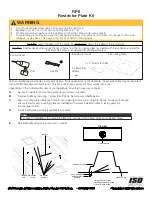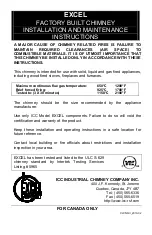
9
The diagram on the previous page shows a multiple transmitter configuration of three sta-
tions and one repeater, with the repeater within a radio-link of all three stations and the
receiver, extending the distance between the repeater and the three stations.
The repeater can receive signals from up to eight stations/transmitters of any type. How-
ever, there are some limitations as to how many and what type of transmitters the receiver
can listen to.
The table below lists the maximum number of stations allowable for a receiver:
Maximum Number of Transmitters in a Network with One Receiver
*Replaces the ISS anemometer.
**Two are allowable only if both stations are only partially populated. For example, A network can either have
both a Leaf Wetness/Temperature station and a Soil Moisture/Temperature station, or it can have one com-
bined Leaf Wetness and Soil Moisture/Temperature station.
Combination Network Configurations
Given the flexibility of the repeater to listen to more than one station and to transmit to
other repeaters, both stations and repeaters can be set up to create a variety of transmitter
networks to transmit to one receiver. Up to four repeaters and eight stations can be con-
figured to transmit to one receiver in a variety of ways.
The above diagram displays a multiple transmitter/repeater configuration with five sta-
tions and three repeaters, with each repeater listening to a station or multiple station also
to the previous repeater. Each repeater and station must be within a radio-link of another
repeater or receiver.
Station Type
Maximum Number
Integrated Sensor Suite (ISS)
1
Anemometer Transmitter Kit*
1
Leaf & Soil Moisture/Temperature Station
2**
Temperature Station
8
Temperature/Humidity Station
8
2
4
4
5
C
3
3
B
1
1
2
A
2
1
4
5
3
4
3
2
1
5
Vantage Pro2
Console/Receiver
2
1
2
3
1
A
B
C
C
5
Any Vantage Pro2
Station
Repeater
Repeater
Repeater
Leaft & Soil Moisture
Station
Anemometer
Transmitter Kit
Temp/Humidity
Station
Temperature
Station













































